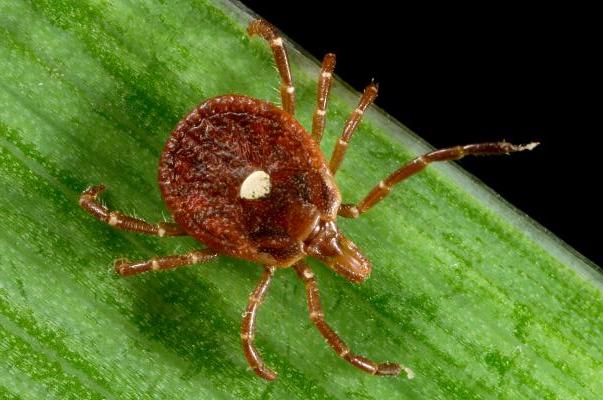Ticks carrying mysterious but potentially deadly virus now found in 6 US states, study says
Those infected with Heartland virus experience fever, fatigue and decreased appetite among other symptoms

Scientists have found that the rare but potentially deadly Heartland virus is circulating in lone star ticks in Georgia, confirming the virus’ active transmission happening within the state.
The scientists, in a study published on Wednesday in the journal Emerging Infectious Diseases, conducted a genetic analysis of virus samples isolated from ticks collected in central Georgia.
Researchers, including those from Emory University in the US, have said the virus’ genetic material RNA has been detected in immature and mature stages of the tick A. americanum from Missouri, Alabama, Illinois, Kansas and New York until now, although it remains unclear if the virus spread to other parts of the country.
The virus was first detected in 2009 in northwest Missouri after two local men were hospitalised with high fever, diarrhea, muscle pains and low counts of white blood cells as well as other symptoms similar to known tick-borne diseases like Lyme disease.
Researchers found that the men were infected with a novel virus named Heartland, which was later traced to lone star ticks, with evidence of infection also seen in deer and other wild mammals.
The tick, named for a distinctive white spot on its back, is the most common tick in Georgia, and is widely distributed in wooded areas across the southeast, eastern and midwest US.
These insects are tiny, about the size of a sesame seed in the nymph stage, and barely a quarter of an inch in diameter as adults, scientists said.
People infected with the virus experience fever, fatigue, decreased appetite, headache, nausea, diarrhea, as well as muscle or joint pain, and many are hospitalised because of their symptoms, according to the US Centres for Disease Control and Prevention (CDC).
Infected individuals have been diagnosed with lower than normal white blood cell counts, as well as lower than normal counts of platelets that aid in blood clotting, and a few older individuals with medical comorbidities have also died to infection with the heartland virus.
However, the actual disease burden could be higher since the Heartland virus is still not well known and tests are rarely ordered for it.
There are currently no vaccines or medications available to prevent or treat infection with the Heartland virus, the CDC noted.
“Heartland is an emerging infectious disease that is not well understood. We’re trying to get ahead of this virus by learning everything that we can about it before it potentially becomes a bigger problem,” study senior author Gonzalo Vazquez-Prokopec from Emory University said.
After a retroactive analysis uncovered a single confirmed case of human infection of the Heartland virus from 2005 in Georgia in which the patient died, scientists assessed serum samples collected in past years from white-tailed deer in the region.
In the new study, scientists found that lone star ticks in Georgia also carry the virus, adding new evidence for how the Heartland virus, first identified in Missouri in 2009, may evolve and spread geographically.
Scientists detected the virus in three different specimen samples of lone star ticks — collected in different locations and at different times — and including both the nymph and adult stages of the ticks.
While the genomes of the three virus samples were similar to one another, they were much different from the genomes of Heartland virus samples from outside the state, scientists said.
“These results suggest that the virus may be evolving very rapidly in different geographic locations, or that it may be circulating primarily in isolated areas and not dispersing quickly between those areas,” Dr Vazquez-Prokopec said.
“We want to start filling in the huge gaps in knowledge of the transmission cycle for Heartland virus. We need to better understand the key actors that transmit the virus and any environmental factors that may help it to persist within different habitats,” he added.
Researchers said the ongoing climate crisis is also fueling warmer and shorter winters and increasing opportunities for some species of ticks to breed more frequently and to expand their ranges.
“We will be gathering data to help support tick surveillance efforts by public health officials in Georgia. Tick-borne diseases are a real and growing threat and the best way to deal with them is not to panic, but to do the science needed to learn everything we can about them,” Dr Vazquez-Prokopec added.
Join our commenting forum
Join thought-provoking conversations, follow other Independent readers and see their replies
Comments
Bookmark popover
Removed from bookmarks